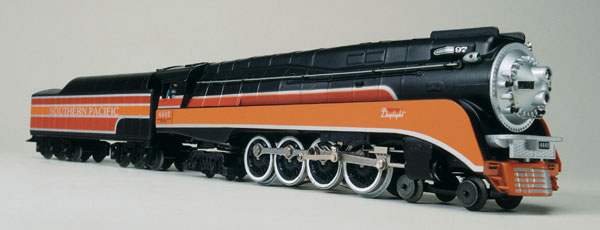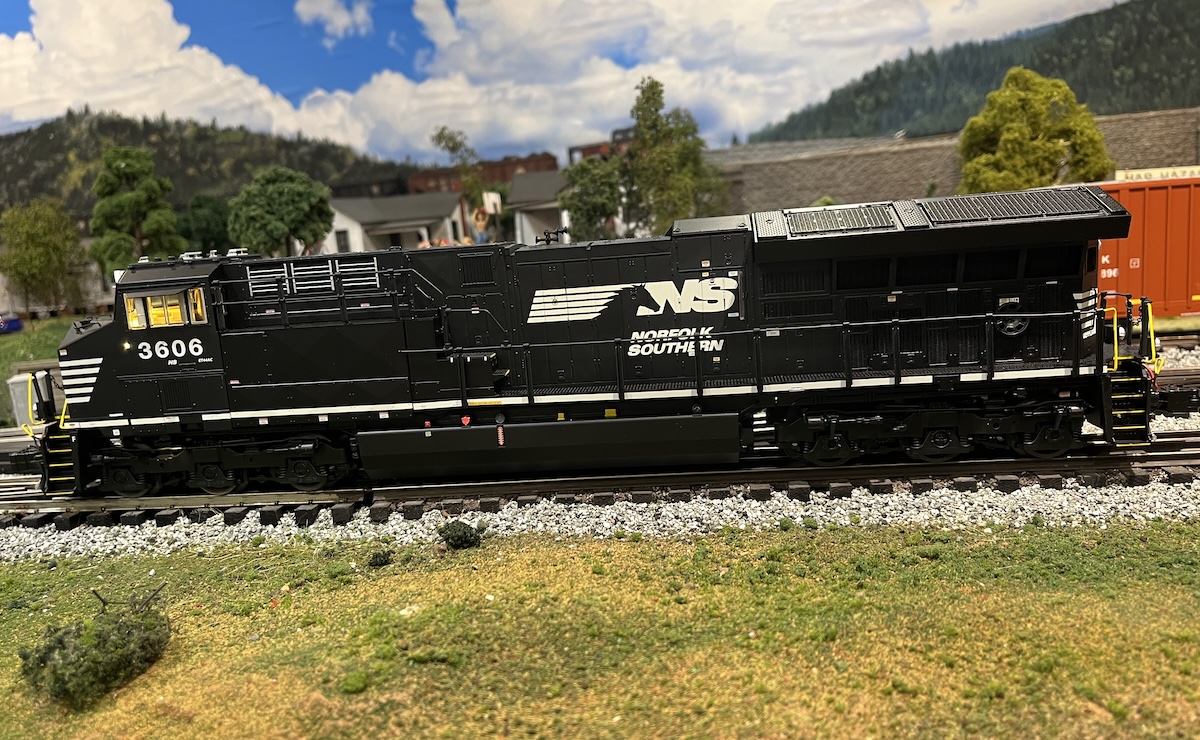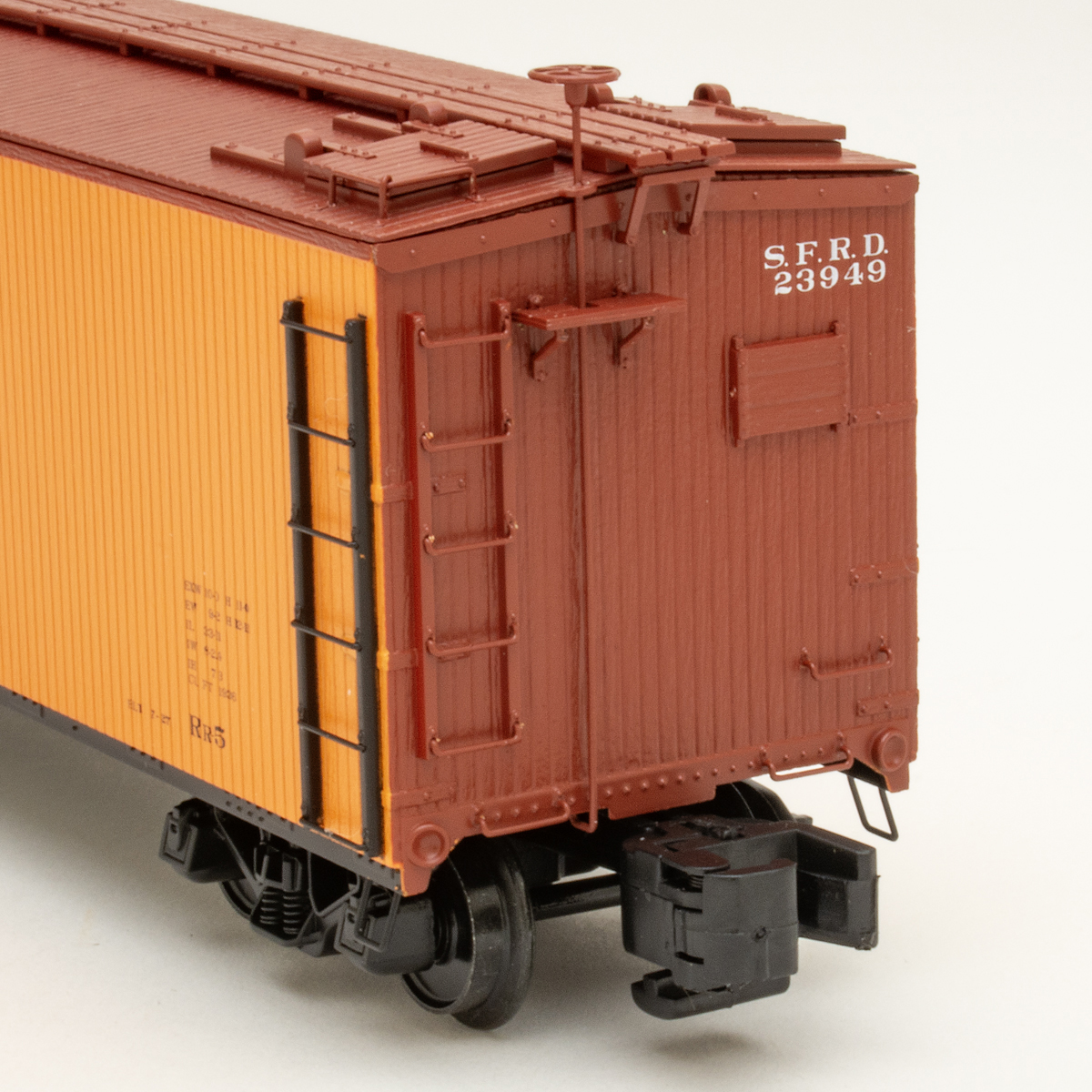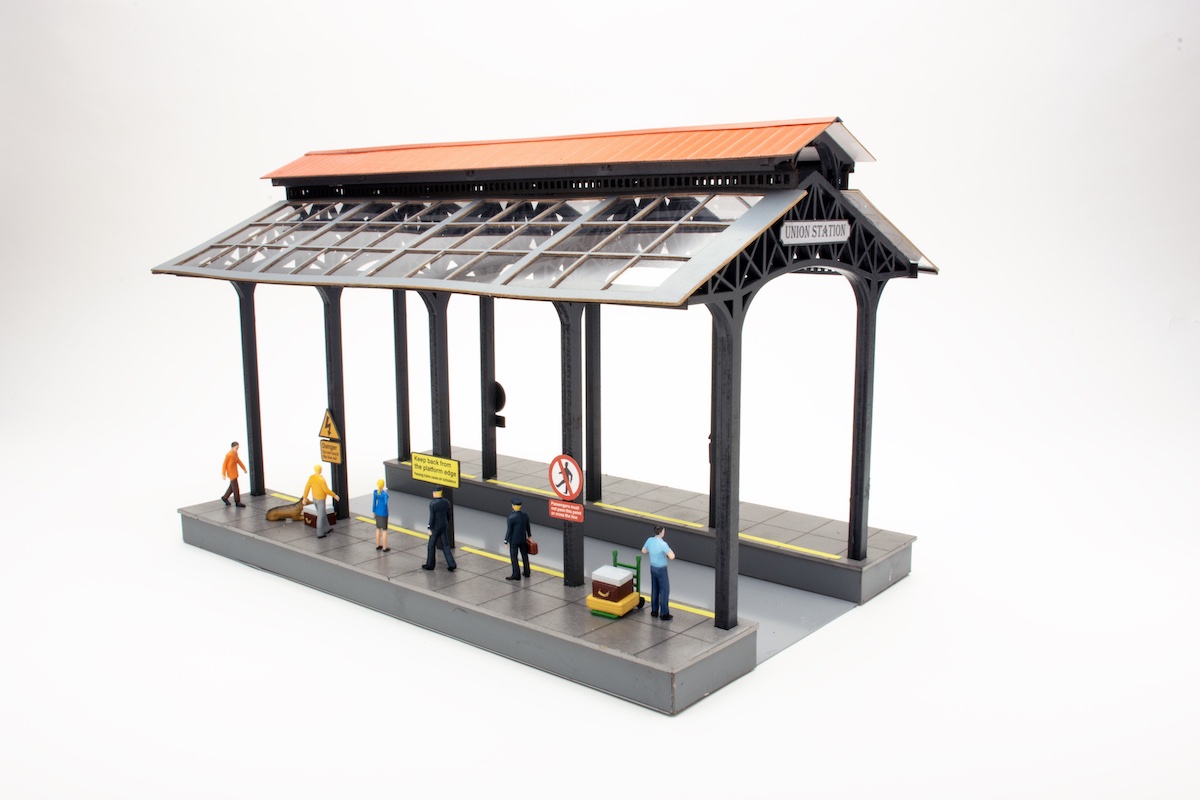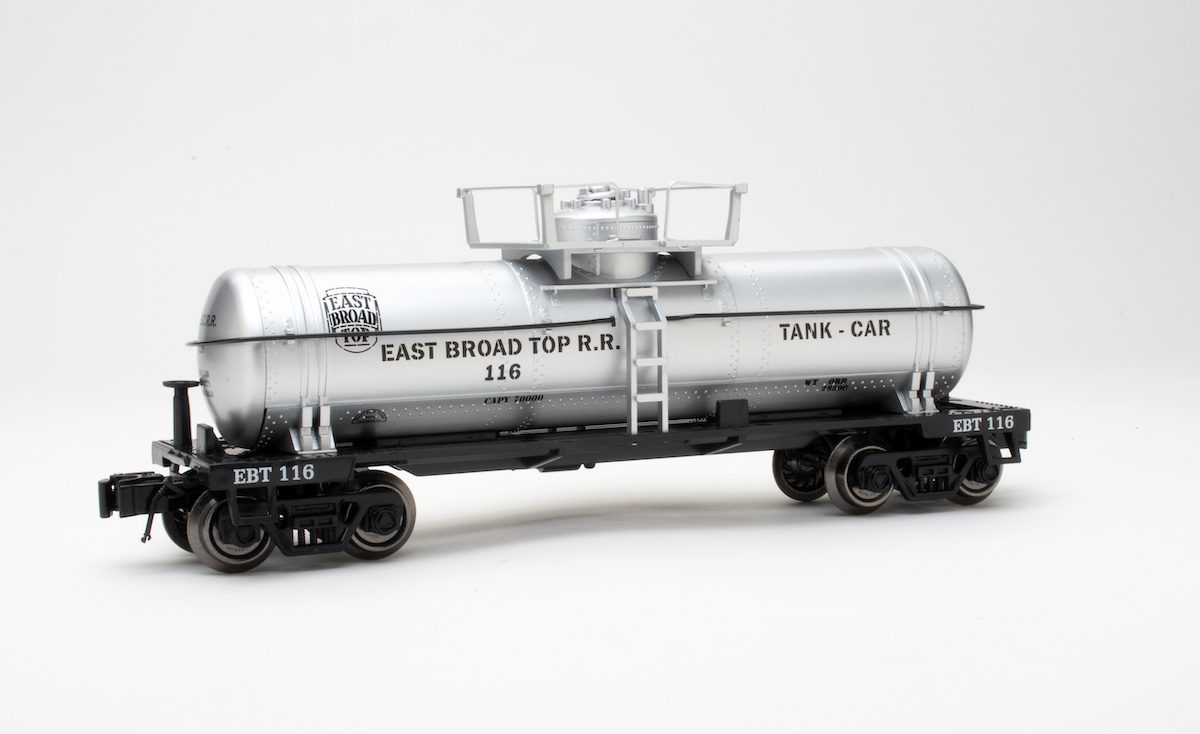The concept for the new Daylight passenger train was born in the middle of the Great Depression. Southern Pacific President Angus McDonald approached the road’s tough financial situation from a unique perspective: spend more money, develop a new passenger train, and streamline operations.
The search for “McDonald’s Dream Train,” as it was dubbed in Robert Reed’s book The Streamline Era, continued until 1934 when Southern Pacific management got Pullman Standard and the Lima Locomotive Works to join forces. The cost of two complete 12-car train sets and six locomotives was more than $2 million, a staggering figure during the Depression.
Pullman produced a train set using Corten steel for the framework and a thin outer layer of stainless steel, producing a lighter-weight car. Lima, on the other hand, applied its Super-Powered concept to the basic GS (General Service) class of 4-8-4 locomotives originally delivered to the Southern Pacific by Baldwin in 1930. The original order was for road nos. 4410-4415, which were classified as the GS2 series. The new engines were capable of powering a 14-car train unassisted over the Southern Pacific’s rugged coast line.
Even before the Daylight went into service, the SP ordered more engines, and the Daylight fleet eventually grew to 50 steam locomotives. They provided reliable service for the Daylight trains until replaced by diesels in 1955.
The Daylight Northern is a popular engine in O gauge, and Lionel’s model of GS4 no. 4449 is Lionel’s third Daylight, following the no. 8307 GS4 (road no. 4449) from 1983 and the no. 18007 GS2 (road no. 4410) from 1991. Daylights also were offered by MTH Electric Trains in both the Premier and RailKing lines, and by Weaver in 1993 and Williams Electric Trains in 1989.
The Daylight look
As were the earlier versions, this model is based on the Lionel N&W “J” boiler with a different nose and streamlined sides.
Physically, this is an impressive locomotive. Measuring 23 inches (92 scale feet to the prototype’s 108 feet) and weighing a total of 10 lbs., this engine and tender will stand out from the crowd on many home layouts.
The samples we tested had top-quality decoration. Paint application was clean and clear, and the less glamorous stretches of the boiler painted black were as smooth as silk. Of special note is the delicate Daylight lettering near the steam chest and the number (4449) and class nomenclature data beneath each cab window.
Interestingly, the engine carries the number 97 on the boiler-top number boards, indicating this is train No. 97. Lionel’s earlier no. 8307 is marked for train No. 99, and the no. 18007 is marked for train No. 98. If Lionel just hadn’t duplicated the engine number, you could run three Daylights on the line without a numbering conflict!
The Daylight engines evoked an image of speed, and this model lives up to that image. The streamlining looks terrific. The pilot and low front number boards give the engine the look of equipment that is ready for business. The streamlined sides give a far better impression of aerodynamic design than does the skirting of the N&W “J”.
With so many lights on the nose, you can certainly see the engine coming down the track. It has bright over-and-under headlights, two green marker lights, and two illuminated number boards on either side of the headlights. The dual headlights should prevent any grade crossing disasters.
I particularly liked the air horn sprouting from the rim of the boiler front. Interestingly, the prototype used both a traditional steam engine whistle and a diesel-like air horn. A new boiler front in the cab hides the Pullmor motor from view, and the cab features a new style, standing engineer figure (take care, he can fly out of the cab on curves taken at “just the right” high speed!).
The die-cast metal tender is very nice and features a large headlight and two markers that illuminate when running in reverse. The top of the tender hides an access hatch for the RailSounds volume control, sound on/off switch, and a 9-volt battery. This is more convenient than pulling the tender shell to install a new battery, as on Lionel’s N&W Warhorse J or even its Boston & Albany Hudson.
Cosmetically, the only distraction is the engine tether that, no matter how you try to secure it, plops out the side of the engine, posing a potential threat to trackside signals and right-of-way structures. This is a real visual annoyance.
RailSounds continues to be the sound system to beat in the O gauge market. The sounds, from the prototype no. 4449, were outstanding. Lionel’s reproduction of the Daylight’s engine sounds, whether running or at rest, are second to none, and having both the steam whistle and the air horn in command mode for you to choose from is a great idea. You now have two ways to clear those crossings, and both sound very good!
Also new for the Daylight sound package in Command mode are CrewTalk, which replicates what Lionel describes as “unintelligible” radio chatter, and TowerCom, which is a departure announcement.
Of late, we’ve been giving instruction sheets a closer examination and Lionel’s fills the bill. Instructions are clear, free of jargon, and contain useful diagrams worth mentioning, including sketches for motor lubrication and replacing front and rear lamps.
On the test track
As nice as the engine appears, operationally, it was disappointing. Our normal routine is to break in an engine, conduct tests, and then rotate the product through our staff’s home layouts for additional feedback.
Even after our normal break-in period, testing, and a layout run, performance was so poor that we acquired a second sample to test. The second sample we examined delivered better performance, but unfortunately was still below expectations.
In a nutshell, both locomotives we tested took fairly high voltage to get around our test track without stalling. Lubrication wasn’t the answer since we lubed the first sample twice and the second sample three times. Entering some O-42 curves the engine wheels seemed to bind, and at lower speeds the engines sometimes stopped and required pushes to get through the curves. The stalling was especially evident when the locomotives, pulling only their tenders, were drawing less than 12 volts.
On an oval of O-72 track, the engines performed moderately better, but they sometimes lurched and seemed to slow down on their own, even when within two feet of the track lockon.
Overall performance was mirrored on a home layout. Both Daylight locomotives suffered in comparison to a Lionel Warhorse J 4-8-4. The engines balked on some curves and required a higher than expected voltage to keep moving.
However, performance noticeably improved the longer the trains ran, especially the second sample. We tested the engine with the Lionel ZW and TrainMaster transformers as well as the MRC DualPower O-27 and MTH Z-4000 with essentially the same results.
How did our speed numbers look? To begin with, using a conventional transformer, the lowest consistent operating speed was 46.4 scale mph. This was the lowest speed that we could run the engine without it stalling on our O-42 curves.
Using of the TrainMaster system did not significantly alter performance. High speed testing delivered 144 scale mph at 18 volts.
The Daylight does not feature Magne-Traction, but instead uses the engine’s weight, a Pullmor motor, and two traction tires to get trains moving.
The Daylight delivered a respectable 1.4 lbs. of drawbar pull.
Southern Pacific fans will find the Daylight Northern to be a fine-looking engine but don’t be surprised if it takes some time for you to break in the locomotive before it delivers smooth performance.





